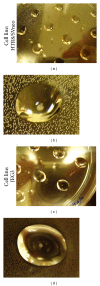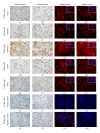HTR8/SVneo cells display trophoblast progenitor cell-like characteristics indicative of self-renewal, repopulation activity, and expression of "stemness-" associated transcription factors
- PMID: 23586024
- PMCID: PMC3615586
- DOI: 10.1155/2013/243649
HTR8/SVneo cells display trophoblast progenitor cell-like characteristics indicative of self-renewal, repopulation activity, and expression of "stemness-" associated transcription factors
Abstract
JEG3 is a choriocarcinoma--and HTR8/SVneo a transformed extravillous trophoblast--cell line often used to model the physiologically invasive extravillous trophoblast. Past studies suggest that these cell lines possess some stem or progenitor cell characteristics. Aim was to study whether these cells fulfill minimum criteria used to identify stem-like (progenitor) cells. In summary, we found that the expression profile of HTR8/SVneo (CDX2+, NOTCH1+, SOX2+, NANOG+, and OCT-) is distinct from JEG3 (CDX2+ and NOTCH1+) as seen only in human-serum blocked immunocytochemistry. This correlates with HTR8/SVneo's self-renewal capacities, as made visible via spheroid formation and multi-passagability in hanging drops protocols paralleling those used to maintain embryoid bodies. JEG3 displayed only low propensity to form and reform spheroids. HTR8/SVneo spheroids migrated to cover and seemingly repopulate human chorionic villi during confrontation cultures with placental explants in hanging drops. We conclude that HTR8/SVneo spheroid cells possess progenitor cell traits that are probably attained through corruption of "stemness-" associated transcription factor networks. Furthermore, trophoblastic cells are highly prone to unspecific binding, which is resistant to conventional blocking methods, but which can be alleviated through blockage with human serum.
Figures





References
-
- Lobo NA, Shimono Y, Qian D, Clarke MF. The biology of cancer stem cells. Annual Review of Cell and Developmental Biology. 2007;23:675–699. - PubMed
-
- Cheung ANY, Zhang HJ, Xue WC, Siu MKY. Pathogenesis of choriocarcinoma: clinical, genetic and stem cell perspectives. Future Oncology. 2009;5(2):217–231. - PubMed
-
- Meissner A, Jaenisch R. Generation of nuclear transfer-derived pluripotent ES cells from cloned Cdx2-deficient blastocysts. Nature. 2006;439(7073):212–215. - PubMed
Publication types
MeSH terms
Substances
LinkOut - more resources
Full Text Sources
Other Literature Sources
Medical
Research Materials
Miscellaneous

